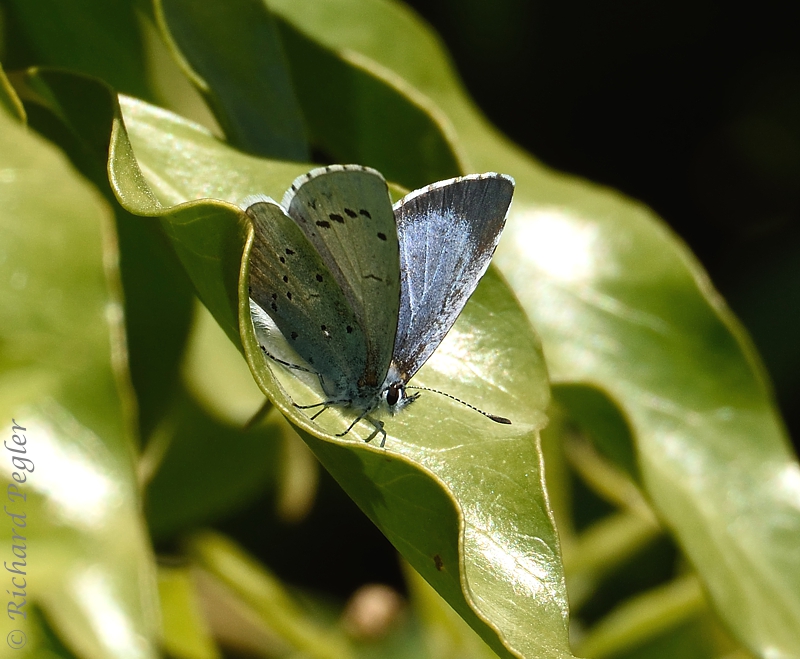I had to go to King's Bromley, 18 miles (29 km) from my home to collect some wild bird food. On my way back I decided to call in at Staffordshire Wildlife Trust's nature reserve - Croxall Lakes.
Having parked my car and entered the reserve, the first thing I saw of interest was a male Banded Demoiselle damselfly. This was my first of the species for 2017. Sadly, almost immediately, this disappeared into a totally inaccessible area.
For the next hour I wandered the site and visited both hides and saw almost nothing which tempted me to release the shutter on my camera. I started to head back towards my car and, having just passed under the railway bridge that separates the two halves of the reserve, I met a couple coming from the direction of the River Thame. We had a short chat, during which I mentioned I was hoping to see some damselflies, and the gentleman said that they'd seen some green damselflies by where the railway crosses the river.
I don't know why I hadn't visited this area in the first place, but suspect that it was because it was not a good location when my prime objective in the past had been birds.
Sure enough, when I arrived in the area I immediately found several Banded Demoiselle. This is a species that I have taken very few photos of, with females being particularly lacking in the files. It was, therefore, the females that I concentrated on.
However, I didn't totally neglect the males. I always find it amazing how different they look in different lighting conditions. In the second and third images, the blue in the wings is outstanding, whereas, in the first, it's almost entirely invisible!
 |
| Banded Demoiselle (Calopteryx splendens) (male) - Croxall Lakes |
In that last image, I'm not sure if those are the remains of its lunch round its mouth parts.
Most of the females were coloured exactly as I'd expect them to be.
 |
| Banded Demoiselle (Calopteryx splendens) (female) - Croxall Lakes |
However, a couple of the specimens present were very much of a golden colour, with just a hint of green - it made me wonder if I was seeing female Beautiful Demoiselle for the first time - or was it just a trick of the light? For the moment I'll assume the latter as the waters hereabouts are sluggish (Beautiful Demoiselle prefer faster moving water), but if you think otherwise, please let me know.
 |
| Banded Demoiselle (Calopteryx splendens)? (female) - Croxall Lakes |
I had to cut my visit short as I was already running well behind the time that I'd told Lindsay I'd be home for tea! Nevertheless, it was good to get some Banded Demoiselle images in the can - and it means that this is a short blog post from me, for a change!
Thank you for dropping by.




















































